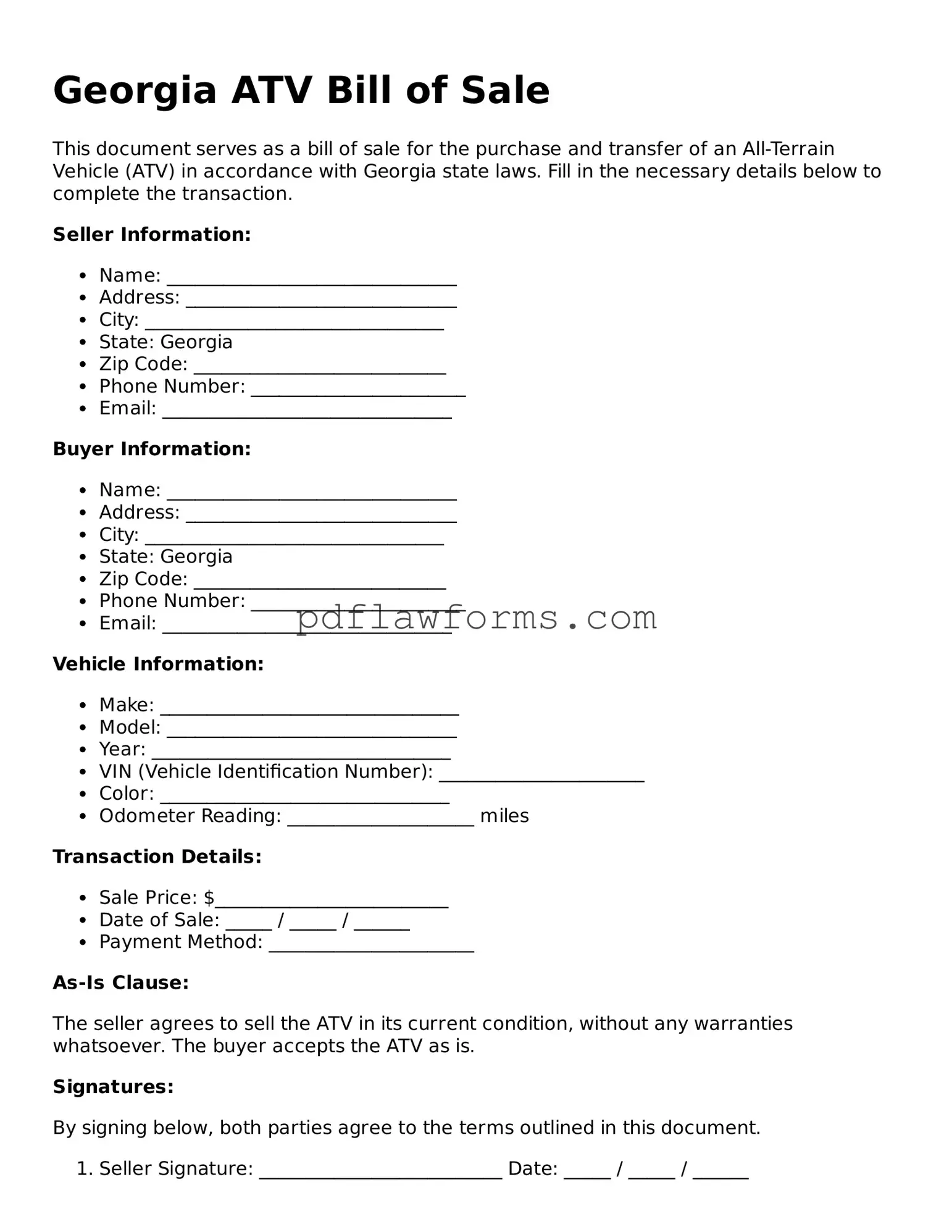Filling out the Georgia ATV Bill of Sale form can seem straightforward, but many people make common mistakes that can lead to complications down the road. One frequent error is failing to include all required information. Each section of the form is essential for ensuring that the sale is legally recognized. Omitting details like the vehicle identification number (VIN) or the seller's information can create headaches later.
Another mistake is not properly identifying the buyer and seller. It's crucial to use full names and addresses. If the information is incomplete or incorrect, it can lead to disputes about ownership. Always double-check that all names are spelled correctly and that addresses are up to date.
Many people overlook the importance of signatures. Both the buyer and seller must sign the document to validate the transaction. Some individuals forget this step, thinking that a verbal agreement is sufficient. Without signatures, the bill of sale may not hold up in legal situations.
Another common pitfall is neglecting to provide the date of the sale. This date is important for record-keeping and can affect the buyer's registration process. Without a clear date, both parties may face confusion regarding when the transaction took place.
Additionally, not including the purchase price can lead to issues. This figure serves as a record of the transaction and may be needed for tax purposes. If you leave it blank or write an amount that doesn’t match what was agreed upon, it can raise questions later.
Some people also fail to understand the implications of not having a witness or notarization. While it’s not always required, having a witness can add an extra layer of security to the transaction. A notary public can also provide verification that the signatures are legitimate, which can be beneficial in case of disputes.
Lastly, many individuals forget to keep a copy of the completed bill of sale. Both the buyer and seller should retain a copy for their records. This document serves as proof of the transaction and can be invaluable if any issues arise in the future.
